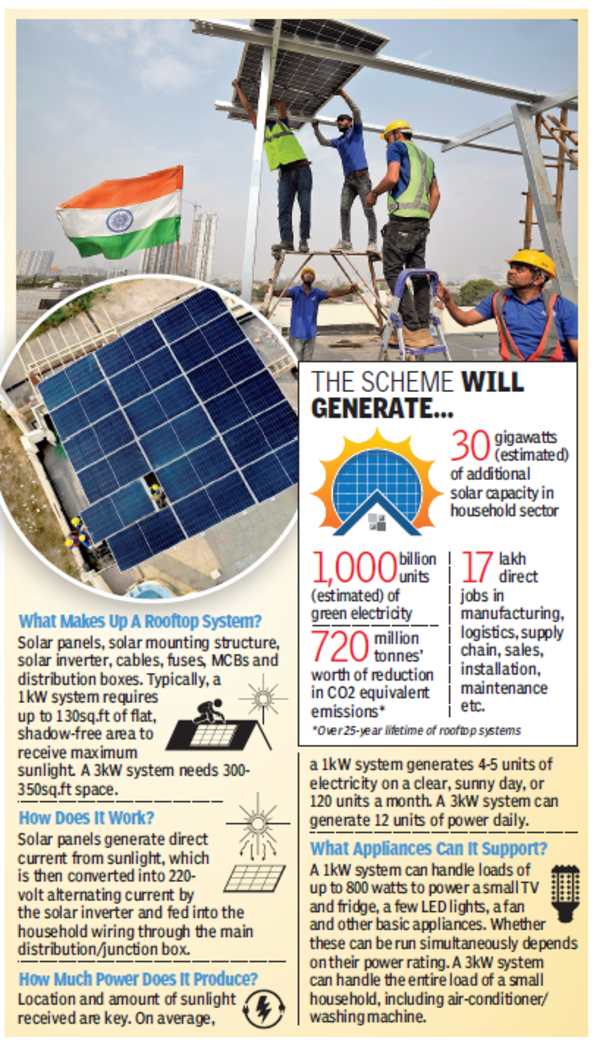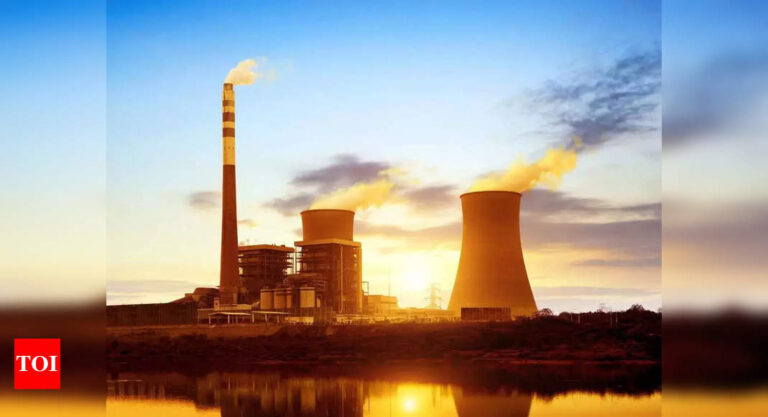[ad_1]
How will customers profit?
Putting in rooftop photo voltaic panels will present a family with a month-to-month provide of as much as 300 items of free energy and estimated annual financial savings of Rs 15,000-Rs 18,000, relying on the scale of the rooftop capability and consumption.Households may also earn cash by establishing charging stations for electrical two-three wheelers/vehicles, particularly in rural areas.
Who’s eligible to use? And the way?
All households can apply however the subsidy is accessible for rooftop techniques of as much as 3 kilowatt (kW or 3,000 watt) capability. Functions may be submitted at https://pmsuryaghar.gov.in and the portal additionally helps with calculations relating to the suitable capability for the rooftop system and its advantages.
Are there any conditions?
Households have to make use of ‘Made in India’ photo voltaic panels and get the system put in by a govt-empanelled vendor (as listed on the portal) to be eligible for subsidy. Battery storage isn’t allowed if a family needs subsidy.
What does the subsidy cowl?
Monetary help is accessible for techniques of solely as much as 3kW capability. The subsidy covers 60% of the price of a system of as much as 2kW capability and 40% of the extra price for techniques between 2 and three kW capability. That quantities to a subsidy of about Rs 30,000 for techniques of 1kW capability, Rs 60,000 for 2kW and Rs 78,000 for 3kW or greater capability. The subsidy is to be paid instantly into the beneficiary’s checking account after rooftop panels have been put in and due diligence has been completed by govt officers.
Does The Consumer Have To Pay Something?
Households must foot a minimum of 40% of the associated fee upfront, which is the steadiness left after the subsidy is utilized. There are indications that central energy corporations will likely be roped in to arrange rooftop techniques for economically weak households dwelling in smaller homes, particularly these constructed underneath PM Awas Yojana, if they’re discovered unable to make the preliminary funding. In such instances the subsidy will go to the facility PSU, which will even make the upfront funding. Households may also avail of loans at concessional charges to fund the preliminary funding.

What’s totally different in new scheme?
The brand new scheme gives a better subsidy than Section-II of the residential rooftop photo voltaic program that was launched in March 2019. Functions for subsidy submitted earlier than Feb 13 will, nevertheless, get govt help underneath the outdated scheme.
What’s the price of a rooftop system?
A rooftop system is priced in accordance with the quantity and measurement of photo voltaic panels, their specs in addition to effectivity. High quality of mountings and peripheral electronics additionally decide the associated fee. A 1kW rooftop system can price upwards of Rs 72,000 and a 3kW unit over Rs 1.6 lakh.
What photo voltaic panels to make use of?
One can select monofacial or bi-facial panels. In both case, the effectivity score determines the full power output and represents the quantity of daylight transformed into power. The panels have a lifespan of 25 years, however proceed to supply energy at decrease ranges thereafter.
What number of panels are wanted?
Most 1kW techniques comprise 3-4 photo voltaic panels of 250-330 watts every. Excessive-efficiency panels convey down the quantity wanted to generate the rated energy output. The variety of panels will increase because the capability rises.
How is energy era calculated?
It is completed by way of web metering, which transforms customers into ‘prosumers’ and permits households with rooftop techniques to promote surplus power to the utility grid.
How does web metering work?
When solar energy era is lower than the load, the family attracts energy from the grid by way of the common connection and the patron is charged for the variety of items used. When photo voltaic era exceeds the load, the excess flows into the distribution community by way of the grid connection. On the finish of the billing cycle, relying on whether or not a family has drawn greater than it has equipped or is a web contributor to the grid, it’s both charged for the facility used or paid for the variety of items fed into the principle line. The optimistic steadiness might also be carried ahead to the following billing cycle.
[ad_2]
2024-03-09 00:58:55
[




















+ There are no comments
Add yours